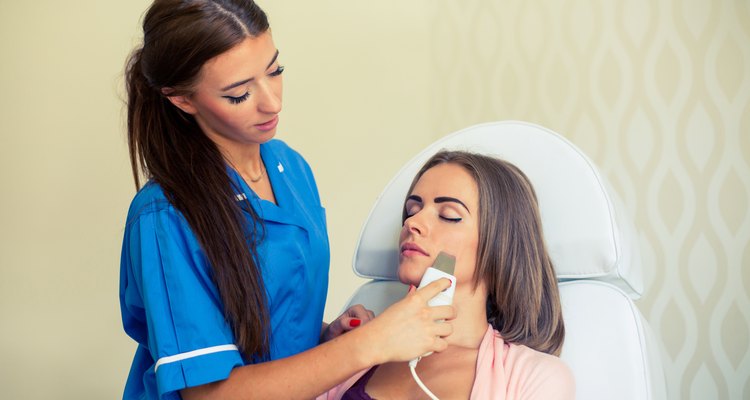
jakubzak/iStock/Getty Images
Face abrasion is a form of skin rejuvenation. It removes the uppermost layer of the skin to allow new epidermal growth and replace damaged skin. This growth often provides the skin with a smoother, more youthful appearance. This treatment is known to even out pigmentation, remove fine lines, fade age spots and even lessen wrinkling. Currently, there are two different types of face abrasion treatments: dermabrasion and microdermabrasion.
Dermabrasion Diagnosis
Dermabrasion essentially scrapes away the epidermal layer of the skin. This is typically done with a rotating wire brush. As the brush is guided along the surface of the skin, it creates a controlled wound. The healing process allows new skin cells to form over the wound in a matter of anywhere between several days to over a week, according to the American Academy of Dermatology (AAD).
Microdermabrasion Microparticles
Not as invasive as dermabrasion, microdermabrasion also uses the process of abrasion to rejuvenate the skin. But instead of a wire brush, microparticles are blown onto the skin to buff away some of the epidermal cells, explains the American Society of Plastic Surgeons (ASPS). Though no wound is created, the microparticles stimulate the growth of new skin cells, which can improve the appearance of the skin.
Radiance Regimen
Both abrasion techniques provide more youthful looking skin. But since dermabrasion is more aggressive, it goes beyond improving the appearance of lines, wrinkles, age spots and sun damage. It can also lessen scarring and treat tattoos, notes AAD. Microdermabrasion is more effective with fine lines, age spots and sun damage.
Potential Side Effects
Dermabrasion and microdermabrasion aren't without potential side effects. Dermabrasion may cause hyperpigmentation, hypopigmentation, thickening of the skin and even scarring. ASPS recommends contacting a health care provider if the wound becomes red, raised and itchy during the healing process. This may be a sign of scarring. Microdermabrasion may cause some redness, but this is usually temporary.
Dos and Don'ts
Though dermabrasion is more invasive than microdermabrasion, this form of skin rejuvenation does have its limitations, cautions AAD. Dermabrasion can help improve the appearance of scars, but it cannot eliminate them completely. Other forms of treatment may be necessary to further reduce the signs of scarring, such as bleaching creams, dermal fillers and chemical peels.
Related Articles

Fraxel Repair Vs. Restore Results

How to Get Rid of a Tattoo Scab

How to Remove an Eyebrow Tattoo
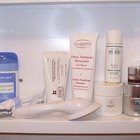
Does Microdermabrasion Work to Remove ...

How to Remove Scars Caused by Insect ...

What Are the Dangers of Photofacials?

Side Effects From Skin Tightening

Photofacial Vs. Microdermabrasion

What Are the Dangers of Fraxel Repair?
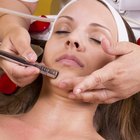
Fraxel Laser Treatment Dangers

How to Remove a New Tattoo

Microdermabrasion for the Neck

Why Does Ink Come Out of a Tattoo?

Mesotherapy & Weight Loss Results
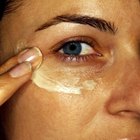
The Best Facial Moisturizers for People ...

How do I Speed Up the Reversal of Face ...
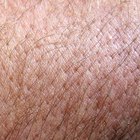
How to Shave Skin Moles
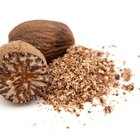
How to Remove Scars With Nutmeg
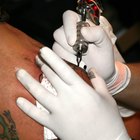
How to Clean Tattoos With Rubbing ...

How to Lighten Birthmarks
References
Writer Bio
Based in Minneapolis, Minn., Dana Severson has been writing marketing materials for small-to-mid-sized businesses since 2005. Prior to this, Severson worked as a manager of business development for a marketing company, developing targeted marketing campaigns for Big G, Betty Crocker and Pillsbury, among others.
Photo Credits
jakubzak/iStock/Getty Images